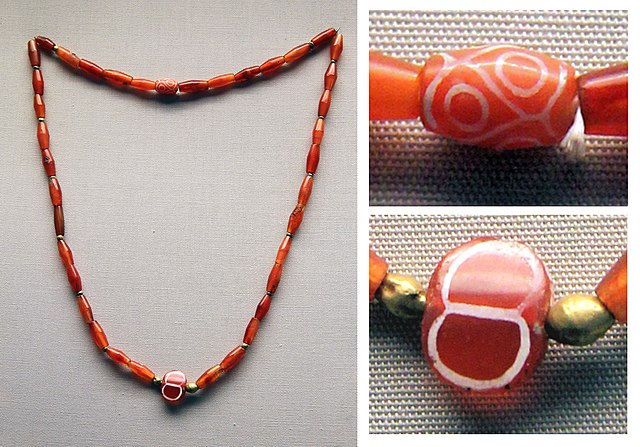Etching is traditionally the process of using strong acid or mordant to cut into the unprotected parts of a metal surface to create a design in intaglio (incised) in the metal. In modern manufacturing, other chemicals may be used on other types of material. As a method of printmaking, it is, along with engraving, the most important technique for old master prints, and remains in wide use today. In a number of modern variants such as microfabrication etching and photochemical milling, it is a crucial technique in modern technology, including circuit boards.
The Soldier and his Wife. Etching by Daniel Hopfer, who is believed to have been the first to apply the technique to printmaking.
The etched carnelian beads in this necklace from the Royal Cemetery of Ur dating to the First Dynasty of Ur (2600-2500 BCE) were probably imported from the Indus Valley.
Self-portrait etched by Wenceslaus Hollar
Selection of early etched printing plates from the British Museum
Intaglio is the family of printing and printmaking techniques in which the image is incised into a surface and the incised line or sunken area holds the ink. It is the direct opposite of a relief print where the parts of the matrix that make the image stand above the main surface.
Micro-topography of an ordinary French post stamp (detail) showing the thickness of ink obtained by intaglio. The words la Poste appeared in white on red background and hence corresponds to areas with a lack of ink.
Banknote portrait pattern made with intaglio printing. Denomination: 1000 Hungarian forint. Depicted area: 18.1 by 13.5 millimetres (0.71 in × 0.53 in).






